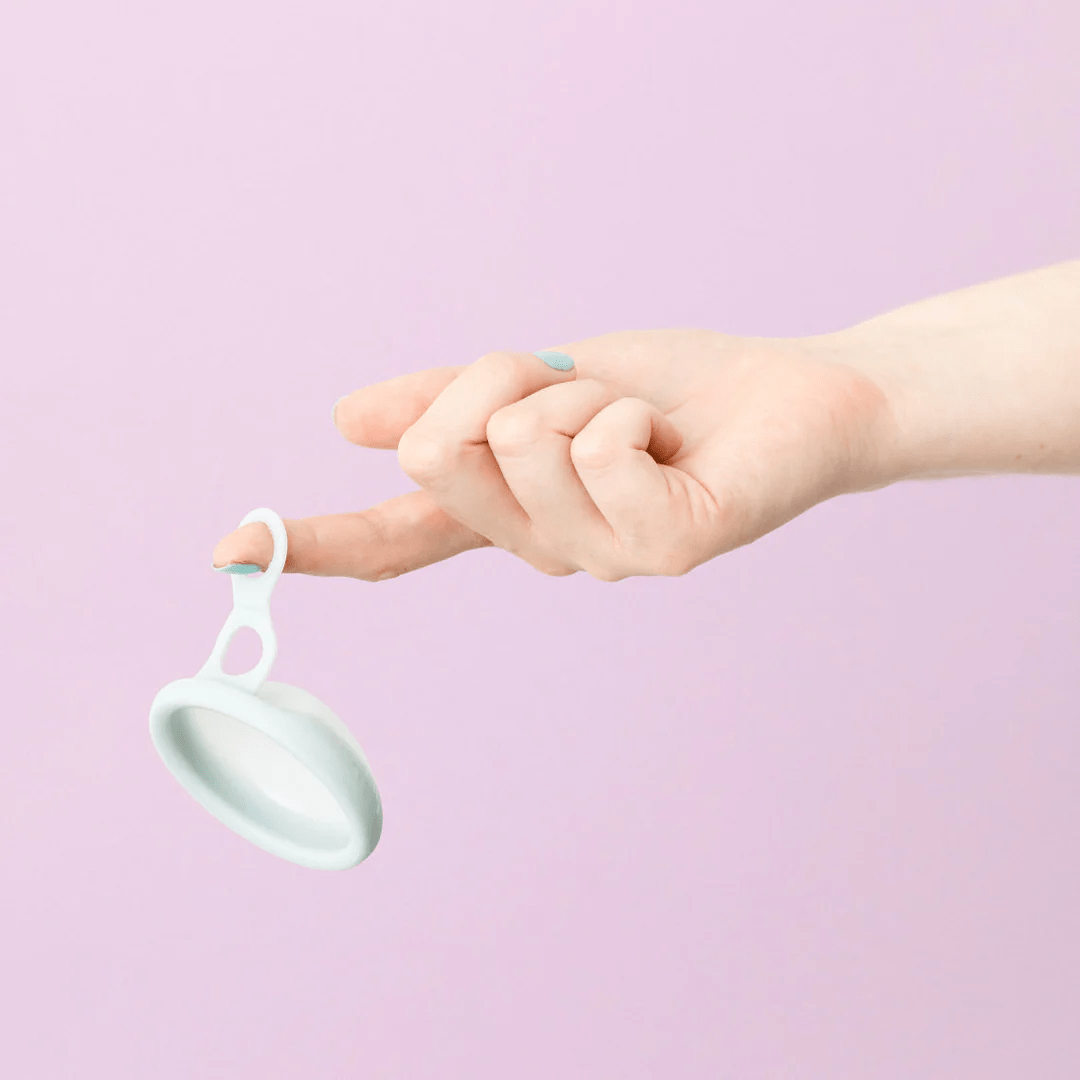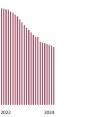What is the difference between a cup and a disc?
Nowadays there are many products on the market to collect or absorb menstrual blood, from menstrual pads and period underwear, to tampons, cups and discs. Many of these products are also available as disposable and reusable variants.
In this blog we explain the difference between menstrual cups and menstrual discs, we will only talk about the reusable variant of these products.
You both insert cups and discs into your vagina, where they collect the blood. Unlike tampons and sponges, for example, they do not absorb anything, but purely have a collection function.
A cup
A cup is a collection cup that is usually made of 100% medical silicone. You have cups in various sizes, where the length and diameter can vary considerably and therefore also the cup capacity. A cup sits in the narrow part of your vagina and is held in place by your pelvic floor muscles. A cup works based on a vacuum. Most cups have a stem at the bottom to make removal easier, but there are also cups without a stem. Very nice if you have a low cervix and the stem otherwise irritates. Most women do not feel a cup when it is in the right place. For women who feel the cup when it is placed, an extra soft cup can be a solution.
Inserting a cup
There are various folds to comfortably insert a cup. You can simply fold it in half into a C-fold, or push one point inwards and then fold it in half (punch down). You then insert the cup into the vagina and gently push it up. If the cup is in the right place, it usually unfolds automatically. You can rotate the cup a little or wiggle it a bit to get it to unfold properly. By feeling along the edges of the cup with your finger, you can feel whether it has indeed unfolded nicely. When the cup fits properly and is fully unfolded, a vacuum is created in the vagina. The cup should sit a little lower than a tampon or disc, in the narrow part of your vagina. If you place a cup too far up, it can sit next to the cervix and cause leakage.
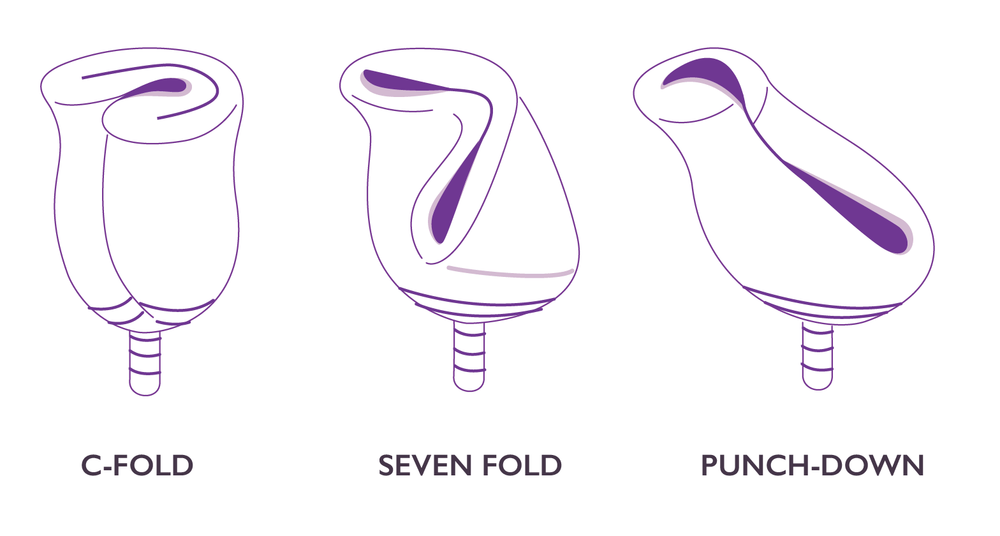
Image: Different ways to fold a cup for insertion
Removing a cup
Before removing a cup, you must always first break the vacuum by squeezing the cup. Once the vacuum is broken, you can carefully pull the cup down by the stem (or at the bottom of the cup). Remember to break the vacuum before removing the cup. Removal can otherwise be painful and any IUD can also be pulled down with it.
Pros and cons of a cup
Most people can remove a cup completely cleanly. Something that is really more difficult with a disc. Another advantage is that in addition to silicone cups, there are also silicone-free cups, which are made of TPE, for example. A synthetic rubber that is even biodegradable over time. The disadvantage is that a cup is a lot more size sensitive and it is sometimes quite a search before you find the perfect cup. The vacuum suction can also be seen as a disadvantage. The capacity of a cup is generally less than the capacity of most discs.
Pros
- Relatively clean to remove
- There are silicone-free cups
Cons
- A cup is size sensitive
- A cup sucks vacuum
- Proper insertion is quite precise
- Smaller content than a disc
A disc
A disc has a much larger diameter and is located in the widest part of the vagina, called the fornix uteri. A disc is also usually made of 100% medical silicone. The edge is sturdy, the container itself is quite soft and flexible. No vacuum is created, the disc simply clamps behind your pubic bone and is so wide that it collects all the blood. The disc sits a lot higher than a cup, just below the cervix. It is held in place because it lies on a plateau, as it were, on your pubic bone. Removal often results in a little more mess than with a cup, although this depends on the disc model. Because no vacuum is created, a disc is safer to use in combination with an IUD. There is no risk of accidentally removing the IUD.
Inserting a disc
Fold the edges of the disc together to form a flat figure-eight shape. Slide the disc into your vagina like a tampon and push it up. Then push the bottom point that you are still holding diagonally upwards, behind your pubic bone. You can often feel this well and slide the disc behind it. You can feel with your finger whether the disc is properly positioned under the cervix, because you can feel the cervix through the bottom of most discs. Also feel whether the edge is neat and the disc is not doubled anywhere.
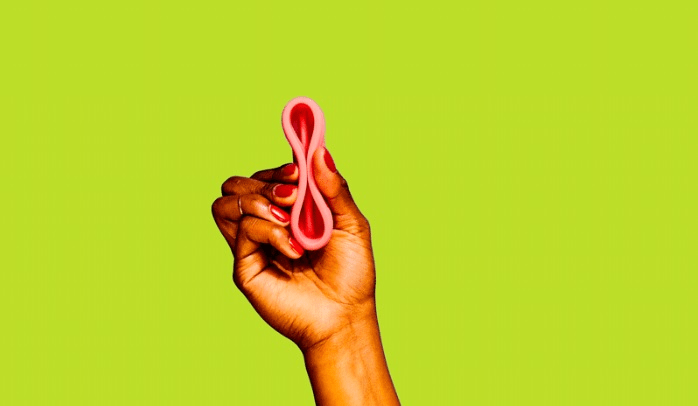
Image: A way to fold a disc for insertion
Removing a disc
If your disc has a loop or finger notch, you can remove the disc relatively easily by pulling on the loop or hooking your finger behind the notch. If necessary, you can hold the disc a little straight with your other hand so that it comes out as straight as possible. When you remove the disc, it automatically squeezes a little, allowing blood to leak out. Some discs do not have a loop or finger notch, with this disc you hook your finger behind the edge of the disc, or grasp the edge with your thumb and index finger. Then gently pull the disc from behind your pubic bone and try to keep it as straight as possible.
Pros and cons of a disc
Most discs are One Size and all have a roughly similar size. Often ranging from 65 to 70 mm. The size is much smaller than a cup and a One Size disc fits most people fine. Insertion is easier than with a cup. No vacuum needs to be created, you simply push the disc behind your pubic bone. A disc often has a large content and can be stored for a longer period of time. Moreover, with a disc you can have sex during your period without you or your partner feeling the disc and without blood being released. A disc can also be used safely in combination with an IUD. The disadvantage of a disc is that it often creates a bit more mess when removing it. Most discs leave blood on your hands when you remove them. With a disc with a loop or finger notch, removal may be a little cleaner. The disadvantage of this is that it can rotate and you then have to look for that loop.
Pros
- Size is not that specific
- Relatively easy to insert
- Does not create a vacuum
- Possible to have sex without blood loss
- Larger capacity than a cup
Cons
- Removal can be messy
How to choose a suitable product?
The choice for a cup or disc is very personal. Some menstruators swear by a cup, while others prefer a disc. With both products it takes some practice until you really get it right. It is best to take a few cycles for this. If necessary, use extra security in the form of a panty liner, menstrual pad or menstrual underwear. In general, a disc has a larger capacity than a cup. If you have a heavy menstrual period, a disc may be more pleasant. Even if you have an IUD, the disc may be a better choice because it does not create a vacuum. If you have a low cervix, or a prolapse of the uterus or bladder, a disc can be very comfortable because it takes up little vertical space. If your cervix is really low, a smaller disc size is nice. There are also special cups for people with a low cervix, these are a bit shorter and do not have a stem. In some cases these can also be used in combination with a prolapse.
If you have a sensitive vagina and feel tampons, for example, even though they fit really well, then a Soft cup may be suitable. These are made of extra flexible silicone and not as stiff as regular cups. Unfolding a soft cup can be a little more difficult. A disc can also be very suitable for people who are easily bothered by a tampon or cup. A disc sits in a different place and does not create a vacuum. The chance of feeling a disc is smaller than the chance of feeling a cup. If the disc is slightly too large, in some cases you may feel the edge of the disc or feel tension on your bladder. It may then be worth trying a smaller disc, or a less sturdy disc.
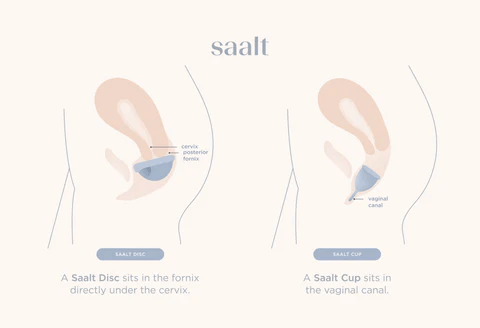
mage: Difference between the location of a disc (left) and a cup (right)
Measure your cervix height
The height of your cervix fluctuates during your cycle. This is usually the lowest at the beginning of your cycle and slightly higher at the end of the cycle. So it is best to measure this at the beginning of your period, on day 1 or 2 and then again at the end of your period. Then you know how much the height fluctuates, and you can take the lowest point into account. Wash your hands and then insert one finger into your vagina. Your cervix feels a bit hard and spongy, similar to the tip of your nose or your lips. You can move your finger back and forth a little if you cannot find the cervix immediately. Once you have found it, see how far your finger is in your vagina or place your thumb against it as you remove the finger. Then measure how far your finger was inside your vagina.
5.5 cm or higher - If this was more than 5.5 cm or if you could not feel the cervix at all, then your cervix is very high. In this case you can use a slightly longer cup or a disc with a loop.
4.5-5.5 cm – You have an average cervix height. That is useful, because then most standard cups fit fine and you can also use a disc.
Less than 4.5 cm – Your cervix is low. A small disc can be very pleasant, but there are also special cups for a low cervix. These are extra short, so you don't feel them.
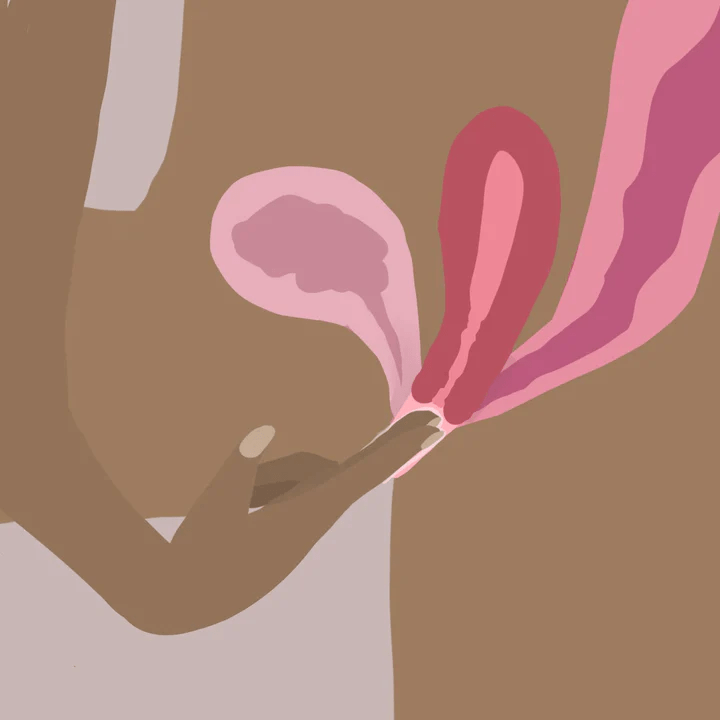
Image: Measuring the height of your cervix
Conclusion
The choice for a cup or disc is truly personal. With a cup, the model, firmness and size of the cup are a lot closer than with a disc. A disc is often One Size, in exceptional cases (for example a very low cervix) you need a smaller disc size. But there isn't much more to choose from. Inserting a cup is also a bit more difficult and requires more practice than with a disc. The cup should be at the right height, in the narrow part of your vagina. It must also be properly unfolded and sitting upright. You slide a disc into your vagina like a tampon, and push the last tip up behind your pubic bone. Just check whether the edge is neat and ready.
When removing a cup, you must first break the vacuum, after which removal is relatively easy. The cup is unfolded when removed and removal can therefore be somewhat sensitive, depending on the stiffness and diameter of the cup. A disc usually makes a little more mess when removing. A disc with a loop or finger notch can be removed more cleanly than a disc without such a helper. You do not have to break a vacuum first and because the bottom of a disc is very thin and flexible and the edge folds over again, removal is less sensitive than a large, stiff cup.
Written by Ilka, owner Nappy's.nl
